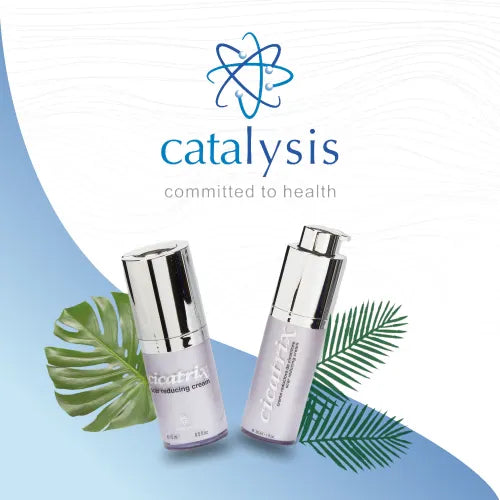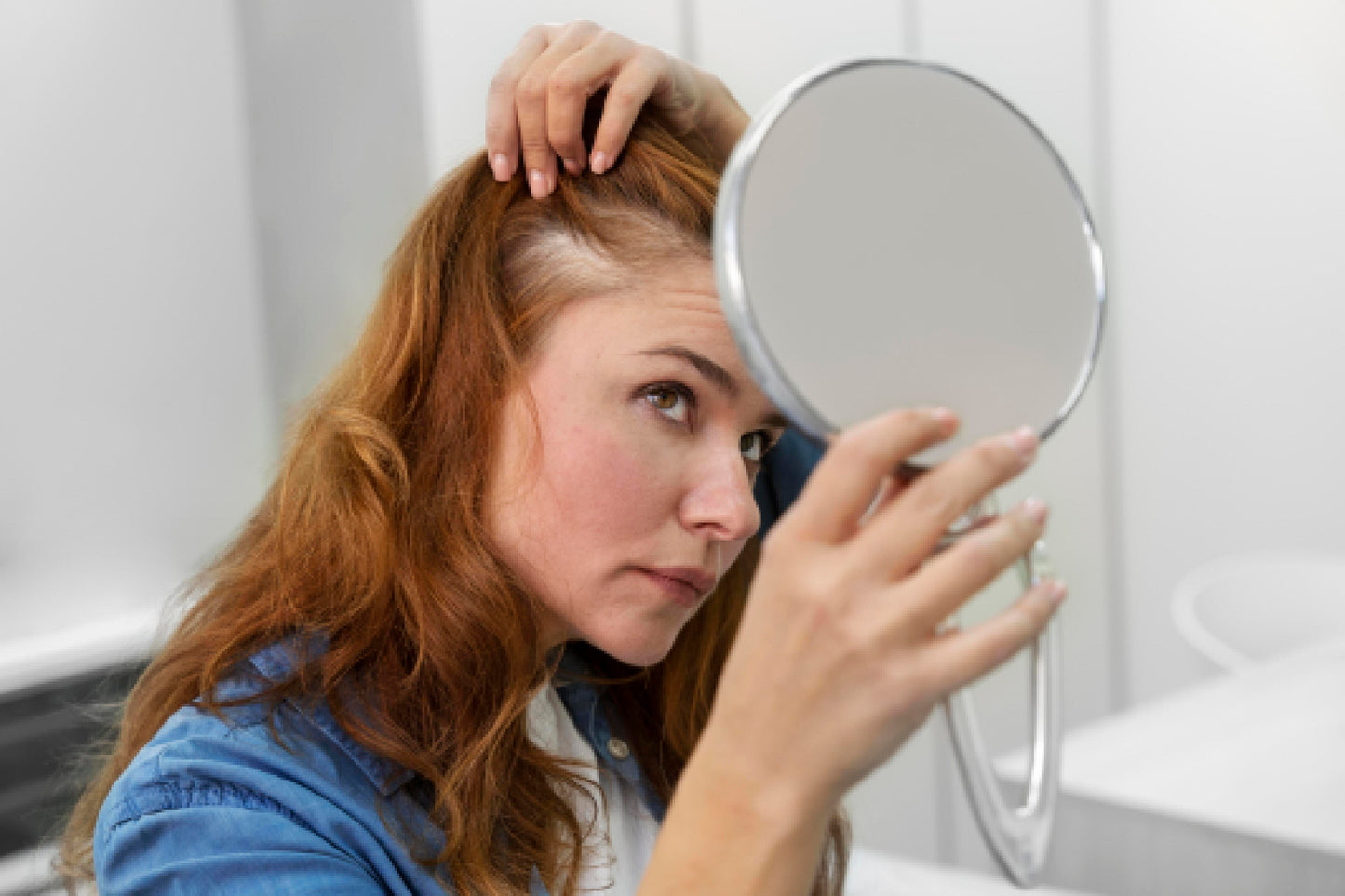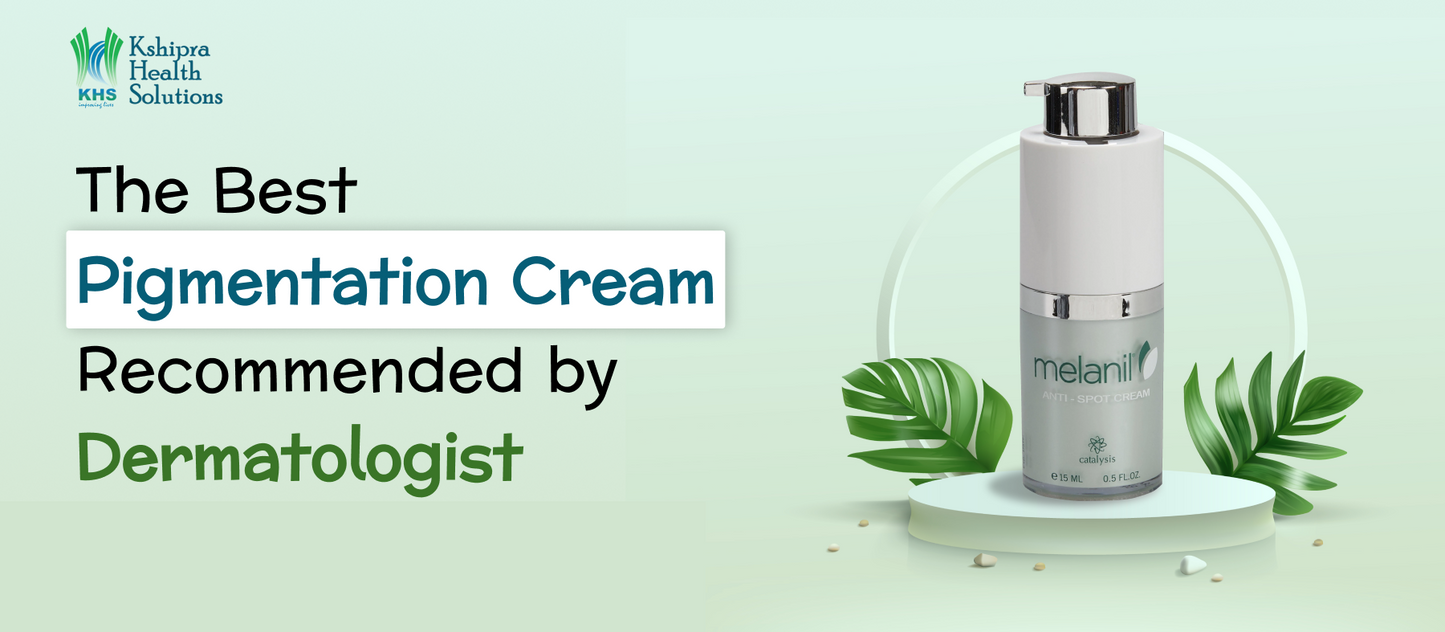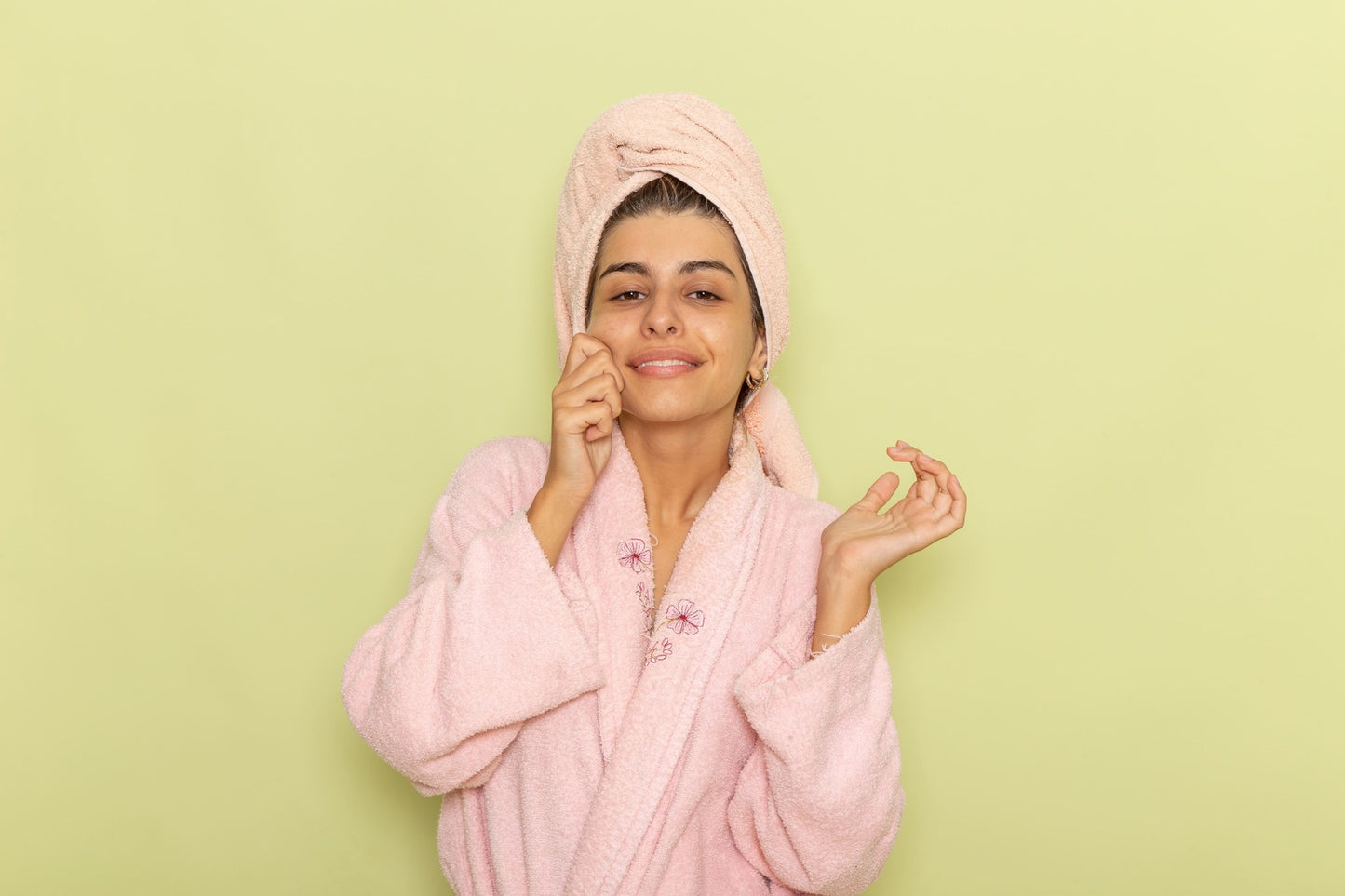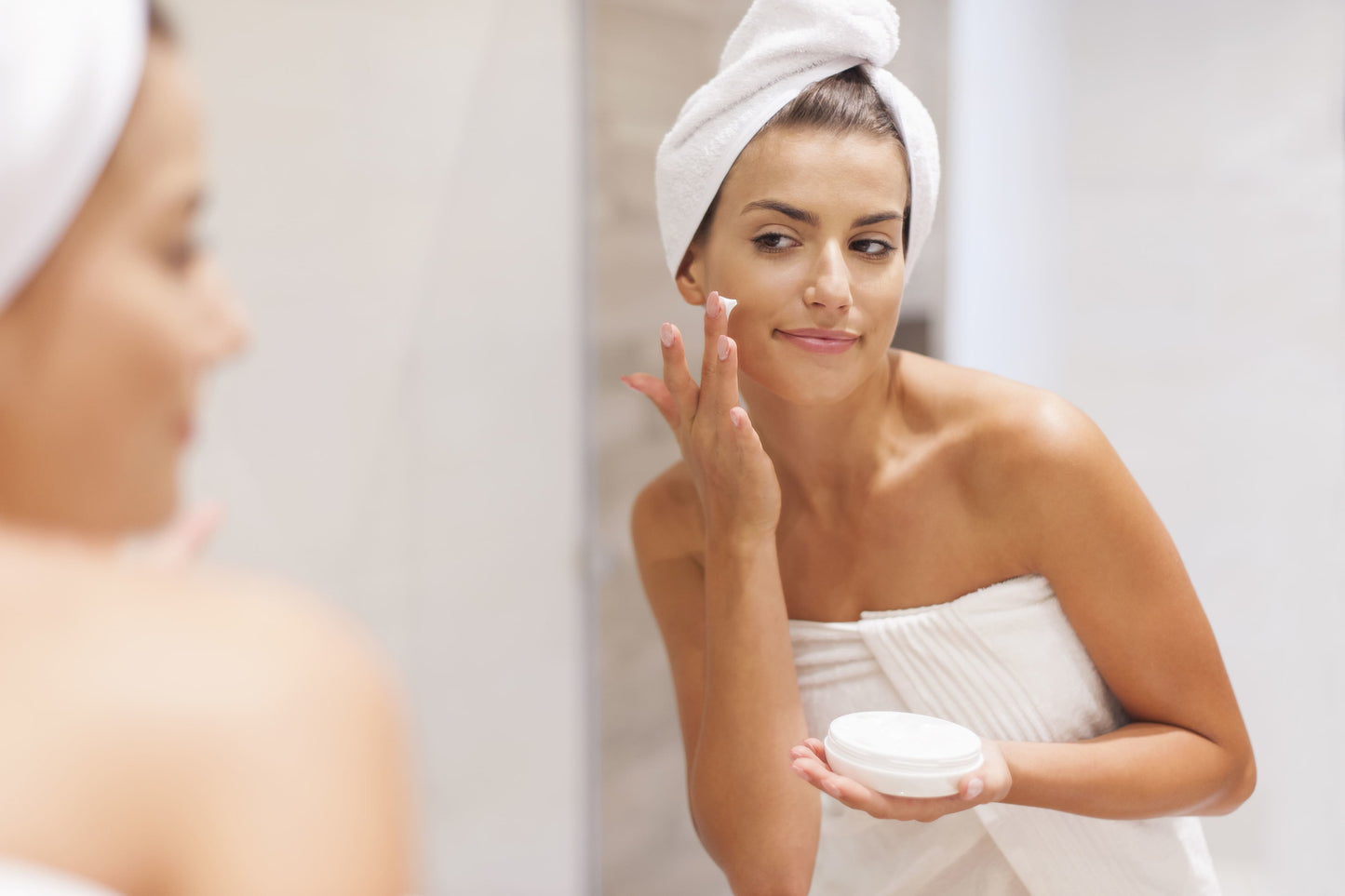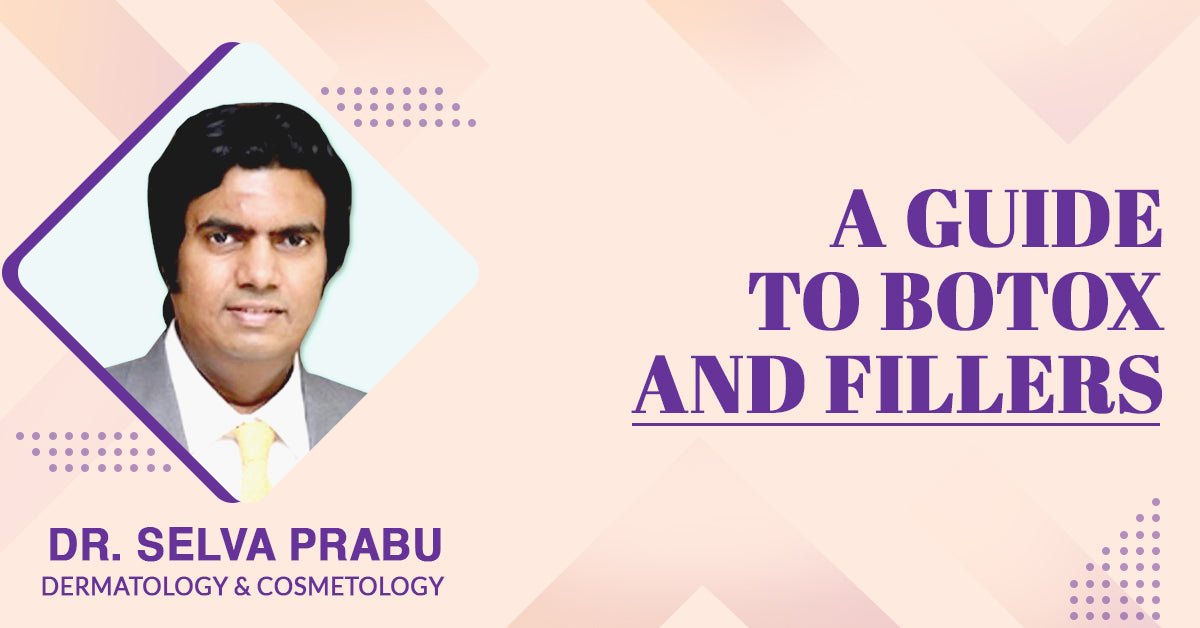
A GUIDE TO BOTOX AND FILLERS
Everyone develops wrinkles as they age, especially on portions of the body that are exposed to the sun, mainly on the face and neck. Wrinkles appear most commonly between the ages of 40 and 50, as the skin loses hydration and thickness.
Types of wrinkles

In general, wrinkles can be divided into two types.
Dynamic wrinkles
These are the results of repeated facial motions. For example, if you frequently pucker your lips around a straw, you might get lip lines.
Static wrinkles
These are caused by a lack of elasticity and gravity's takeover. The wrinkles that accompany jowls are permanent.
The number of wrinkle treatment options is increasing. Several over-the-counter medications are available, and individuals turn to their doctors for longer-term solutions.
So, let us understand each of these treatments in detail
What is Botox?
Botox is a purified form of the botulinum toxin obtained from bacteria. It has been on the market for over two decades and has been used to treat neurological diseases that cause muscle weakness. It is also used for the treatment of migraines and other medical conditions.2, 3
Botox is mainly used to treat dynamic wrinkles when it comes to wrinkle therapy. Naturally, wrinkles appear around the eyes and mouth and between the eyebrows. With time, they appear more visible. Botox injections work by relaxing the muscles around the wrinkles. The appearance of dynamic wrinkles is reduced by preventing movements of muscles.3
Botox is not used for fine lines resulting from collagen breakdown.3
Where can we use Botox treatment?

Botox only works on wrinkles that are caused by muscle movement. These are known as dynamic wrinkles and are often called "expression lines." 2, 3
The most common dynamic wrinkles that Botox can treat are lines on the upper face, such as the "11" between the brows, horizontal lines on the forehead, and crow's feet around the eyes. Smiling, frowning, squinting, and other facial expressions leads to these wrinkle lines.2
Botox will not work on fine lines and wrinkles caused by sagging or loss of plumpness in the face, also called static wrinkles. This includes lines in the cheeks, neck, and jowl areas.2
Botox is not a long-term solution. Treatments must be repeated to maintain the wrinkle-reducing results.2
Botox's muscle-relaxing effect usually lasts 3 to 4 months for most people.2
Botox also received FDA approval to treat various medical problems, including 4
- Overactive bladder
- Excessive underarm sweating
- Lower limb spasticity
- Chronic migraines
What to expect after botox treatment4
Avoid rubbing, massaging, or applying any pressure to the treated area. These might lead to spreading the botox to other parts of the body and can negatively affect the results. Do not lie down or bend over for three to four hours after receiving an injection between the brows. Doing so may cause the Botox to slip under the orbital rim and cause an eyelid droop.
There is little to no downtime expected after the treatment, and the person should be able to resume normal activities immediately in most cases.
It is important to understand possible improvements and have realistic expectations. Visible results can be expected within 1-2 days post-treatment.
Possible side effects of botox
According to the American Academy of Ophthalmology (AAOS), Botox is only recommended for people in good health to reduce the risk of side effects.
Possible side effects include:3
- Bruises at the site of injection
- Drooping eyelids, which can take several weeks to resolve
- Eye redness and irritation
- Headaches
What are dermal fillers? 2, 3
Dermal fillers, also called soft tissue fillers, are materials intended to be injected beneath the skin's surface to add volume and fullness.
Substances used in dermal fillers include:
- Calcium hydroxylapatite is a mineral-like compound present in bones.
- Hyaluronic acid is found in some fluids and tissues in the body that add plumpness to the skin.
- Polyalkylimide is a transparent gel that is compatible with the body.
- Polylactic acid stimulates the skin to make more collagen.
- Polymethyl-methacrylate microspheres (PMMA), a semi-permanent filler
Each of these is designed to treat different signs of ageing or other cosmetic problems.
The duration for which fillers act might differ. Some fillers last 6 months, whereas others can last up to 2 years or longer.2
How are dermal fillers different from Botox?
Botox inhibits wrinkling by preventing muscles from flexing, while dermal fillers fill in wrinkles caused by a loss of collagen, volume, and elasticity.2, 5
It is possible to get both Botox and dermal fillers or more than one type of filler because they target different parts of your face.
What problems might dermal fillers help with?2
Different types of dermal fillers are used to address different signs of aging. Depending on the filler selected, they may:
- Plump up thinning lips
- Enrich or fill in shallow areas on the face
- Reduce or remove the shadow or wrinkle under the eyes caused by the lower eyelid
- Fill in or soften the look of recessed scars
- Fill in or soften static wrinkles, especially on the lower face
Possible side effects of dermal fillers3, 6
Dermal fillers have a higher risk of complications and side effects than Botox. However, severe adverse effects are uncommon.
Some side effects include:
- allergic reaction
- bruising
- infection
- itching
- numbness
- redness
- scarring
- sores
Long-term facial swelling is possible in severe cases. Temporary numbness and swelling can be relieved with ice packs. To reduce the risk of this side effect and others, do allergy testing before getting a dermal filler if it is recommended for the particular filler.3
Conclusion:
Botox and dermal fillers can both be used to treat facial wrinkles. Both treatments are administered through injection. However, they have slightly different applications. Dermal fillers may provide longer-lasting improvements, but they also have more side effects than Botox injections. They can also be used in combination to help patients reach their goals. Have a thorough discussion with your doctor to understand which treatment is suitable for you and what is realistic in terms of results.
Reference:
- How to Treat Wrinkles Naturally at Home, https://www.healthline.com/health/home-remedies-for-wrinkles, assessed on 12th May 2021.
- What is the difference between Botox and dermal fillers? , https://www.medicalnewstoday.com/articles/320510, assessed on 12th May 2021.
- What's the Difference between Botox and Dermal Fillers? , https://www.healthline.com/health/botox-vs-fillers, assessed on 12th May 2021.
- Botox: The Cosmetic Use of Botulinum Toxin, https://www.healthline.com/health/botox#preparation, assessed on 12th May 2021.
- What To Know About Dermal Fillers and Botox, https://health.clevelandclinic.org/7-questions-about-dermal-fillers-botox-answered/, assessed on 12th May 2021.
- Dermal Filler Do's and Don'ts for Wrinkles, Lips and More, https://www.fda.gov/consumers/consumer-updates/dermal-filler-dos-and-donts-wrinkles-lips-and-more, assessed on 12th May 2021.
